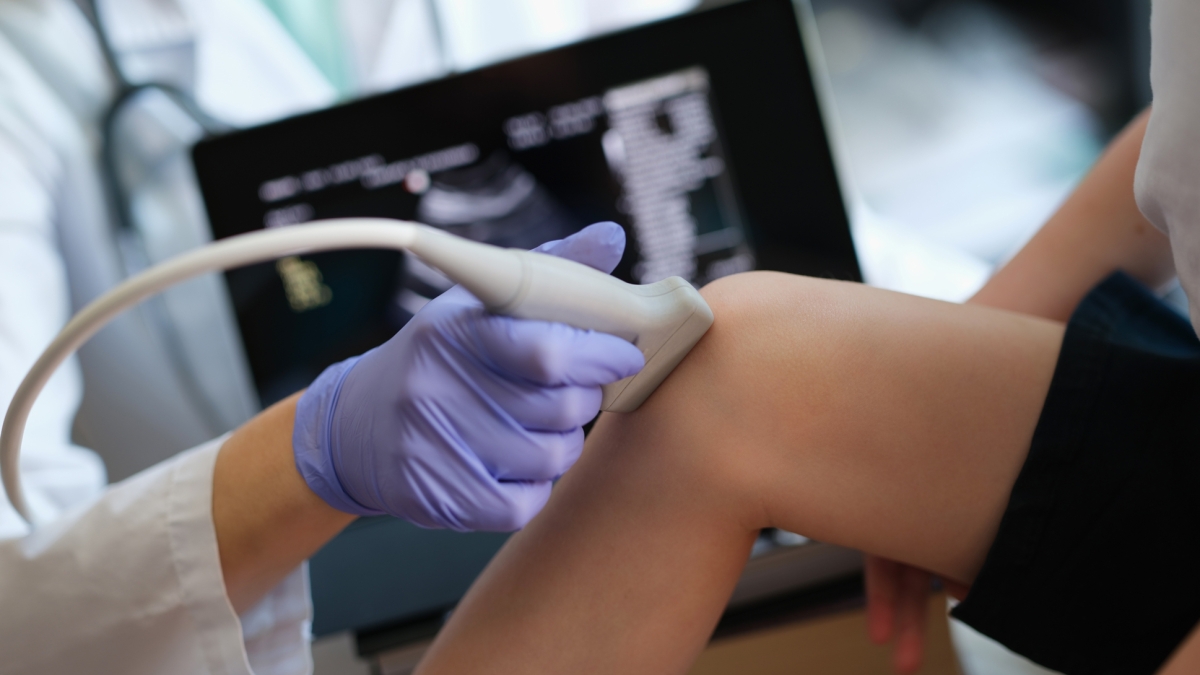Detecting Foreign Bodies with Ultrasound
When dealing with injuries, especially in accidents or incidents involving sharp objects, foreign bodies can often become trapped in soft tissues. These bodies may include glass fragments, wooden pieces, and metal fragments. Traditional examination methods, such as physical examination or X-rays, may not always be sufficient for the precise localization or visualization of these foreign bodies.
In contrast, ultrasound offers significant advantages in this scenario. The high-frequency sound waves emitted by the transducer penetrate the soft tissues and reflect back, creating detailed images of the internal structures. Foreign bodies, even those the size of a few millimeters, are clearly visible during ultrasound scans. Real-time imaging allows for dynamic assessment, helping a specialized Radiologist precisely identify the location, size, and depth of the foreign body.
Ultrasound and Wooden Foreign Bodies
Foreign bodies made of wood are often more challenging to detect with X-rays, as wood is relatively radiolucent, meaning it does not reflect X-rays well and is thus difficult to visualize in X-ray images. This can result in trapped wood pieces causing discomfort and pain without being visible in X-rays.
In contrast, ultrasound scans are effective in visualizing foreign objects made of wood.
Benefits of Ultrasound in Foreign Body Detection
- Non-Invasiveness: Ultrasound imaging is a non-invasive imaging method that bypasses the need for surgical exploration. This reduces patient discomfort and speeds up the diagnostic process.
- Real-Time Imaging: Ultrasound scans provide real-time images, allowing for immediate visualization of the problem and facilitating quick decision-making for further treatment.
- Flexibility: Ultrasound scans can be used in various body areas, making them suitable for assessing issues in multiple anatomical regions, including extremities, soft tissues, and even superficial wounds.
- Accuracy: With high-resolution imaging, ultrasound precisely reveals the location of foreign bodies, enabling doctors to effectively plan the extraction process.
Clinical Applications
The ability of ultrasound to detect foreign bodies resulting from injuries has a broad range of applications:
- Accidents and Injuries: In emergency situations, ultrasound is often used to assess trauma and determine the presence of foreign bodies, especially in cases of injuries caused by broken glass, wood, or metal.
- Occupational Injuries: In industries where workers are exposed to the risk of sharp materials, ultrasound can assist in the timely detection and removal of foreign bodies, preventing potential complications and infections.
- Sports Injuries: Athletes suffering injuries during sports activities can benefit from ultrasound scans to check for the presence of foreign bodies, enabling immediate treatment and recovery.
Conclusion
Ultrasound imaging plays a crucial role in detecting foreign bodies such as glass and wood after injuries. Its non-invasive nature, real-time imaging capabilities, and high precision make it an irreplaceable tool in assessing injuries. With ultrasound guidance,
Ultrasound imaging plays a crucial role in detecting foreign bodies such as glass and wood after injuries. Its non-invasive nature, real-time imaging capabilities, and high precision make it an irreplaceable tool in assessing injuries. With ultrasound guidance, the processes of foreign body removal is facilitated. As medical technology continues to evolve, ultrasound will undoubtedly remain a valuable tool in the medical field, enhancing the assessment of injuries and patient care.




